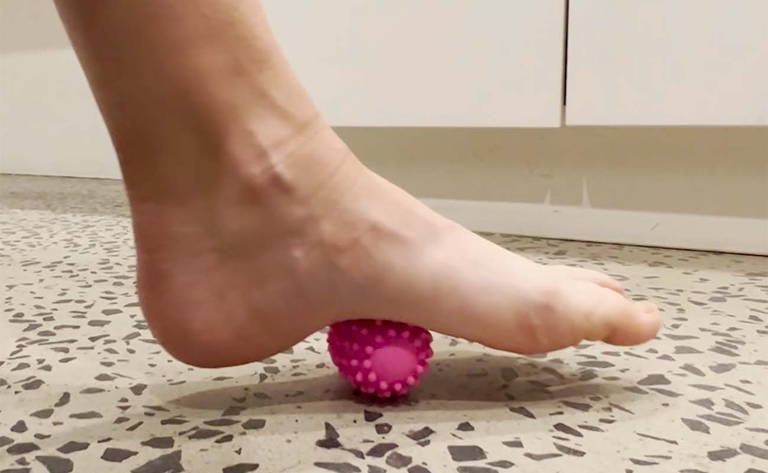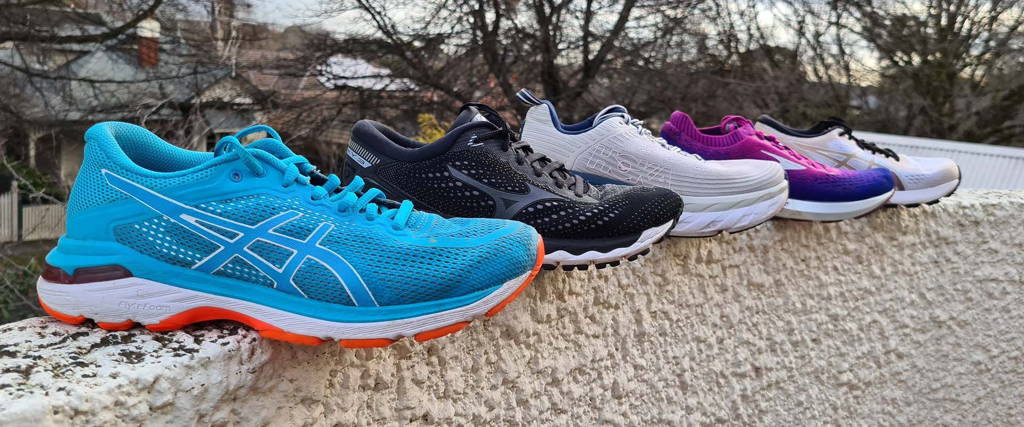Plantar Heel Pain
5 Things You Need To Know About Plantar Heel Pain
Plantar heel pain is one of the most common conditions that affect both sedentary and physically active people. It can have a significant impact on work and activities. Clinical podiatrists Angela, Emilia and Monique from Well Healed Podiatry explain in this blog Five Things You Need To Know About Plantar Heel Pain: What it is & symptoms, Side effects if left untreated, Things you can do at home to help improve heel pain, how wearing proper footwear will prevent and reduce symptoms and the importance of visiting your podiatrist for a proper check-up.

The team at Well Heeled Podiatry, use a range of advanced and effective treatment modalities to treat acute and chronic foot, ankle and heel pain in all age groups. All our clinical podiatrists have gone on to receive further training and qualifications in the areas of dry needling, shockwave therapy, foot mobilisation and manipulation techniques and pre-pointe assessments. Well Heeled Podiatry is recognised by AHPRA the Australian Podiatry Association, Australian Pediatric Podiatry, and Sports and Exercise Australia.
Did you know that 1 in 5 Australians reports foot pain?
At Well Heeled Podiatry, we see a range of acute and chronic foot and ankle injuries. Common causes of heel pain include obesity, ill-fitting shoes, running and jumping on hard surfaces, abnormal walking style, injuries and certain diseases. In this blog, we wanted to share with you five things you need to know about Plantar Heel Pain and some helpful tips you can do to make your foot feel better.
Number 1: What is Plantar Heel Pain and what are the symptoms
Plantar heel pain is the general term given to any structure that is injured in the area of the heel. This can include damage to the fat pad, plantar fascia band, heel bone or nerves. Heel pain conditions can include:
● Plantar fasciitis, fasciosis or fasciopathy
● Partial or complete plantar fascia rupture
● Fat pad atrophy
● Calcaneal bursitis
● Calcaneal bone oedema
● Calcaneal nerve impingement
● Calcaneal stress fractures
● Heel Spur Syndrome
Patients with heel pain can describe a range of symptoms such as;
● Pain on weight-bearing and prolonged standing
● Increased pain when stepping out of bed in the morning
● Pain can reduce during the middle of the day when the tissues are warm
● Pain when getting up from sitting after long periods
● Bruised heel sensation
● Sharp, shooting or burning pain in the heel, even at rest
● Tenderness around the heel bone and along the arch of the foot
Number 2: Side effects if left untreated
Heel pain can be very debilitating for some patients. If it is left untreated it can affect mobility and have other compounding health concerns such as weight gain, cardiovascular implications and mental health deterioration. This is because walking and exercise can become increasingly difficult, and social events become less frequent as most footwear becomes uncomfortable too.
The intensity and duration of your heel pain can become worse over time and the longer you leave it untreated the more damage that can occur. This may result in longer recovery times.
Number 3: Things you can do at home to help improve heel pain
Spiky ball massage
Use a spiky ball to massage under the arch of your feet before your first steps in the morning and at night. We recommend rolling both feet for a total of 5 minutes in the morning and 10 minutes in the evening. It is important to roll both feet to prevent any pain or complications arising in your good foot, as you will be relying on this foot to do more work for you when you are experiencing heel pain on the other side.
Heel raises
Strengthening your calf muscles is important when combating heel pain. The calf muscle plays a very important role in foot function and any weakness in the calf can be a contributing factor to heel pain.
Depending on your level of strength you can perform this exercise as a single leg calf raise or double leg calf raise. It is best to perform your calf raises with your runners on to support your feet.
NO Barefoot Walking
When you are barefoot you can put a lot more strain on your plantar fascia bands and impact through your heel bone. Therefore if you are suffering heel pain we advise using arch support, especially for the very first steps in the morning.
We recommend thongs with arch support such as Archies and after your shower, put your supportive runners on and wear them around the house. In the evening when you are wanting to take your runners off, you can either put your Archies back on or invest in some cozy arch support slippers.

Number 4: Wearing proper footwear will prevent and reduce symptoms
Depending on the severity of heel pain, we would recommend the following types of footwear:
● Stabilising shoes, such as the Brooks Adrenaline GTS and Mizuno Inspire. This type of shoe provides increased support, especially for the flat foot.
● Rocker sole shoes such as Hoka, New Balance More. This stiff forefoot sole reduces strain through the plantar fascia band. It is a support, lightweight runner with cushioning through the heel, which is beneficial for heel pain.
● Carbon Plated Runners, such as the Asics Magic speed, as this is the closest thing to wearing a moon boot while keeping you moving and active.
Finding the right shoe that is comfortable and fits well is paramount when it comes to treating heel pain and should be undertaken by a professional.
At Well Heeled Podiatry we always trust the Active Feet team to correctly assess and fit our patients to find the right shoe for their needs.

Number 5: Visit your podiatrist for a proper check-up
It is important to understand that no single treatment works for everyone, which is why it is so important to see a podiatrist who can tailor a treatment plan to specifically reflect your needs. At Well Heeled Podiatry we use a range of advanced treatment options to treat acute and chronic heel pain. Our shockwave machine is clinically proven to relieve chronic heel pain in 70-80% of cases and is beneficial for encouraging tissue healing.
We also use a range of other therapies such as joint mobilisation, tool-assisted release of the calf and plantar fascia, dry needling, strapping, exercise rehabilitation programs and customised orthotics therapy if clinically indicated. We will assess the way you are standing and walking and how well your feet are functioning. This will allow us to properly diagnose your heel pain and the reason why it is according and provide you with a tailored treatment plan. Further imaging such as an X-ray or Ultrasound will be requested during your appointment if necessary.
The goal of treatment is to reduce your pain, improve function and allow for proper healing of the injury. When we achieve this you will feel more confident on your feet again and can get back to the things you love doing. We will also educate you on long-term strategies and prevention so that we reduce the risk of heel pain happening in the future.

Well Heeled Podiatry Team believes in the theory of proactive prevention rather than reactive treatment. Their treatment regime entails correctly assessing and diagnosing your condition, providing you with various treatment options to improve your symptoms and get you back to enjoying a healthier lifestyle. Working together as a team and collaborating with your GP or existing health professionals to get the best results for patients, Well-Heeled Podiatry has become a trusted podiatry clinic in the bayside community.
If you want to discuss your podiatry needs with Well heeled Podiatry Professionals click here.




Foot Health Tips: Start your New Year on the Right Foot
Benefits of New Runners for Sore Feet